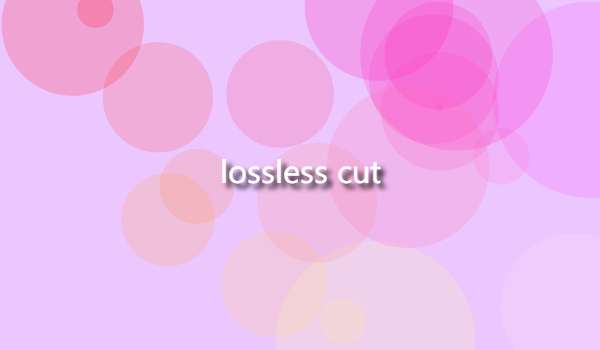From time to time, you may need to be able to quickly and easily cut out sections of a video file. This could be for removing the intro or end credits, for making a custom video highlight, or just for converting files from one format to another. In this article, we’ll show you how you can do this without any loss in quality.
What is lossless audio compression?
Lossless audio compression is a technique used to reduce the size of digital audio files without sacrificing sound quality. In lossless compression, the original audio data is first reduced to a lower-quality format, such as PCM or ADPCM, and then re-compressed using a higher-quality algorithm. This process results in smaller files without any loss of sound quality.
Lossless audio compression can be helpful when you want to save space on your hard drive or when you need to transmit digital audio over a network. Some popular lossless compression algorithms are LAME and AAC.
What are the different types of lossless audio compression?
Lossless audio compression is a type of encoding where the data is compressed without losing any information. This means that the audio files are smaller in size, but still retain all of the original audio content. There are a number of different types of lossless compression, but the most popular ones are MP3, AAC, and FLAC.
MP3 is the most popular type of lossless compression, and it’s used in a lot of online music streaming services like Spotify and Apple Music. MP3s are typically around 20 to 30 percent smaller than their uncompressed equivalents, and they’re also generally playable on almost any device. AAC is another popular format, and it’s mostly used for audiobooks and podcasts. AACs are typically around 60 to 80 percent smaller than their uncompressed counterparts, and they’re also usually playable on almost any device. FLAC is an older format, but it’s still one of the most popular options for lossless audio compression. FLACs are typically around 90 to 95 percent smaller than their uncompressed counterparts, and they’re also usually playable on just about any device.
There are a number of other lossless audio compression formats out there, but these are the most common ones
How lossless audio compression works
Lossless audio compression is a process of reducing the size of an audio file without compromising its quality. This is done by reducing the number of bits used to represent the audio data. The benefit of using lossless compression is that it results in smaller files that can be stored more easily, transmitted more quickly, and played back with less noise.
There are a number of different lossless compression algorithms available, but the most common ones are known as bitrate codecs. Bitrate codecs work by taking a sample of an audio signal and compressing it using a mathematical algorithm. The result is a compressed file that is smaller than the original file, but still retains all of the information present in the original signal.
To understand how lossless audio compression works, let’s take a look at an example. Say we want to compress an audio file that contains 10 seconds of music. Normally, we would start by sampling the audio signal and encoding it using a bitrate codec. This would result in a compressed file that contains 10 bytes (or 0.1 seconds worth of data). However, if we were using a lossless codec, we would not actually store any data for the 0.1 second sample.
Overview
The snaptube en linea is a process of removing digital noise from an image. The result is a higher quality image that can be used for restoration and archiving purposes.
What is lossless compression?
Lossless compression is a perceptual audio technology that reduces the size of digital audio files without sacrificing fidelity. It is similar to how lossless data compression works in the computer world: by eliminating unnecessary bytes, the file size is reduced. This technique can be used to reduce the size of digital audio files without affecting their quality. Lossless compression is also known as format-free or lossless coding.
How does lossless compression work?
The basic principle behind lossless compression is that it tries to find similar sounding blocks of sampled data and use those blocks to create a new, smaller file. For instance, if you were to take a sample of a piano string and save that data as a .WAV file, lossless compression would try to find similar sounding blocks of data and store them all together in the same file. This process may result in some sections of the file being deleted, but it will always try to preserve as much quality as possible.
How do I know if my audio files are Lossless Compressed?
There is no real way to determine whether or not your audio files are Lossless Compressed without actually decompressing them. However, many lossless compression software packages will give you an indicator flag
How lossless compression works
Lossless compression is a process of reducing the size of a digital file without compromising on its quality. Lossless compression algorithms can be divided into two categories: perceptual and statistical. Perceptual compression algorithms are designed to reduce the information content of a digital file while leaving its structure, or meaning, intact. Statistical compression algorithms, on the other hand, aim to reduce the size of a file by reducing the number of bits used to represent it.
The most common type of lossless compression is data encoding, which is used to reduce the size of video files, audio files, and images. Data encoding uses mathematical algorithms to manipulate data so that it can be reduced in size without losing any information. There are several types of data encoding, including waveform encoding and entropy coding. Waveform encoding reduces the size of an audio file by converting it into a series of small waveforms called samples. Encoding entropy reduces the size of an image by removing redundant data, such as black pixels and white pixels that have the same value.
Lossless compression can also be used to improve the performance of a computer system. By reducing the size of files being processed, lossless compression can improve system performance by
What are the benefits of lossless compression?
There are many benefits to using lossless compression for your audio files. Some of the benefits include:
-Lossless compression can save you a lot of space on your hard drive.
-Lossless compression can help to improve the audio quality of your audio files.
-Lossless compression can reduce the amount of time it takes to upload your audio files to a server.
How to use lossless compression?
lossless compression is a process of reducing file size without sacrificing image quality. Lossless compression can be achieved by encoding data in a manner that reduces the number of bits used to represent the data, without reducing the information content of the data. This means that no information is lost in the process, which leads to smaller files with similar visual quality to the original.
FAQ About lossless cut
What editing tool do they use in lossless cut ?
CUT. CUT is a proprietary video editing software. We use it for our videos and many other video creators and enthusiasts that require quick and easy editing. CUT makes it easy to crop, resize, speed up, slow down or add audio tracks or subtitles to your video in seconds.
I want to make a highligh for my video, what should I do?
Our website has a handful of websites that have already been created, feel free to browse through them to see what they are like and if they fit your preferences. If you want to make a highligh of your own, start by brainstorming ideas and coming up with your own concept. You can then use the lossless cut template below and follow the instructions on it to load it into lossless cut and make this video of yours.
What if I need to cut out sections of a video file for marketing purposes?
Our mission is a simple one- make videos accessible to everyone. We want people to be able to watch, save, share and re-watch their videos on the go, with higher quality and no hassle. So yes, we can cut out small sections of your video file for you and we’ll do it for free.
How can I save the video without losing quality?
We make it possible to save videos without losing the quality with our lossless cut. You can download the video and share it with friends, follow us on social media platforms, or send a link to your exact length in our web app. We are providing ultimate freedom to people who don’t have time to watch videos.
How do I fix a video that has too many frames to be analyzed by lossless cut ?
If your video comes with a time-line written on the webpage, make sure that the cut you are trying to make is before that point. You can also add a “to” field in the “Info” section of the lossless cut app.put in the length and location of where you want to start playing.
How can I cut out sections of a video for personal and professional use?
You can use lossless cut to trim a video into sections, which you can export as individual videos. You will be asked to choose the video length and export format before you start cutting. Additional file sizes may apply depending on your software’s limitations. If exporting as a video is not an option, then you can also choose to export each section as a separate image or a text file.
What do you need to cut a video from?
We accept a lot of different content such as video, audio, images, and templates. Videos can be cut in 1 click from any of the following: YouTube, Vimeo, Dailymotion. Audio files can be cut from soundcloud or any other site that offer MP3s. Images can either be found on flickr or can be uploaded to our website using a template you download and upload your image file on.
What is the difference between lossless and lossy cutting?
Lossless cutting is the process of cutting video without compressing the end-results. The videos are saved as 8-bit or 16-bit bitmap files on your computer and numbered sequentially in order they were created. The creators work with both lossless and lossy files simultaneously, changing the file format of one while working with the other. Lossless video cutting is a common format among editors, animators, bloggers, vloggers and film makers for editing videos.
How lossless cut Works
1. Choose your video editing software: There are a variety of video editing software options out there, and each has its own features and benefits.
2. Cut the video: Once you have chosen your software and prepared the video file, use it to cut the video into the sections you need. You can use basic drag and drop features or more involved methods, depending on your software.
3. Export the edited video: Once you have cut the video, it’s time to export it for use elsewhere. Choose a format that will work best for your intended use, and make sure to save it with a unique filename.
Pros of lossless cut
• Lossless cuts means that there are no lossy artifacts during the encoding or decoding process.
• This results in a more accurate final product.
• It is possible to create lossless audio and video files without sacrificing quality.
• Lowering the bitrate can result in smaller file sizes, which makes it easier to share and transmit media files.
• Lossless encoding/decoding is not as processor intensive as other compression methods, so it can be used on lower-powered devices.





